This step by step woodworking project is about how to build a 12×16 rectangular pavilion – free diy plans. This rectangular pavilion is the perfect addition to your backyard, because it will create enough shade for a table and a few chairs. I recommend you to build this next to a brick oven or a bbq. This structure is heavy duty, but please follow the building codes and hire a professional contractor if you don’t have the right skills to undertake the project on your own.
We recommend you to invest in the best materials you could afford. Therefore, you should buy weather-resistant lumber, such as pressure-treated lumber, cedar or redwood. If you use regular pine, I recommend you to apply the appropriate products to enhance its durability. Always take accurate measurements before adjusting the size of the components at the proper size. Drill pilot holes trough the components before inserting the wood screws, to prevent the wood from splitting. See all my Premium Plans HERE.
Made from this plan
Pin it for later!
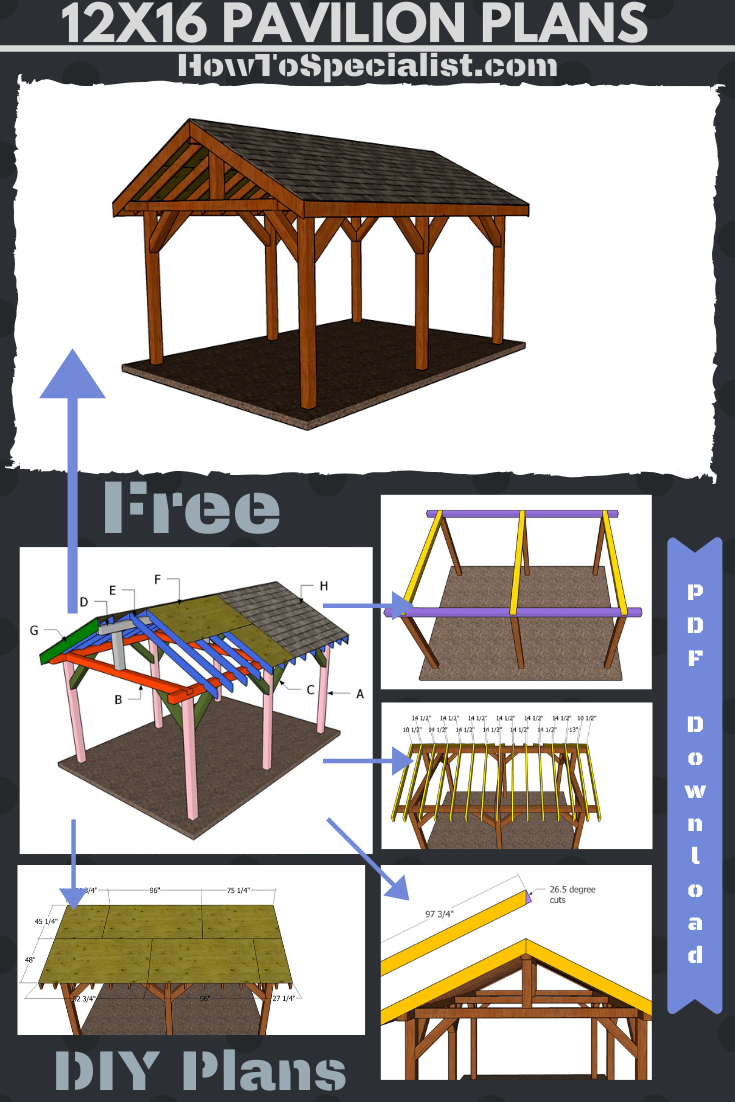
12×16 Pavilion – Free DIY Plans
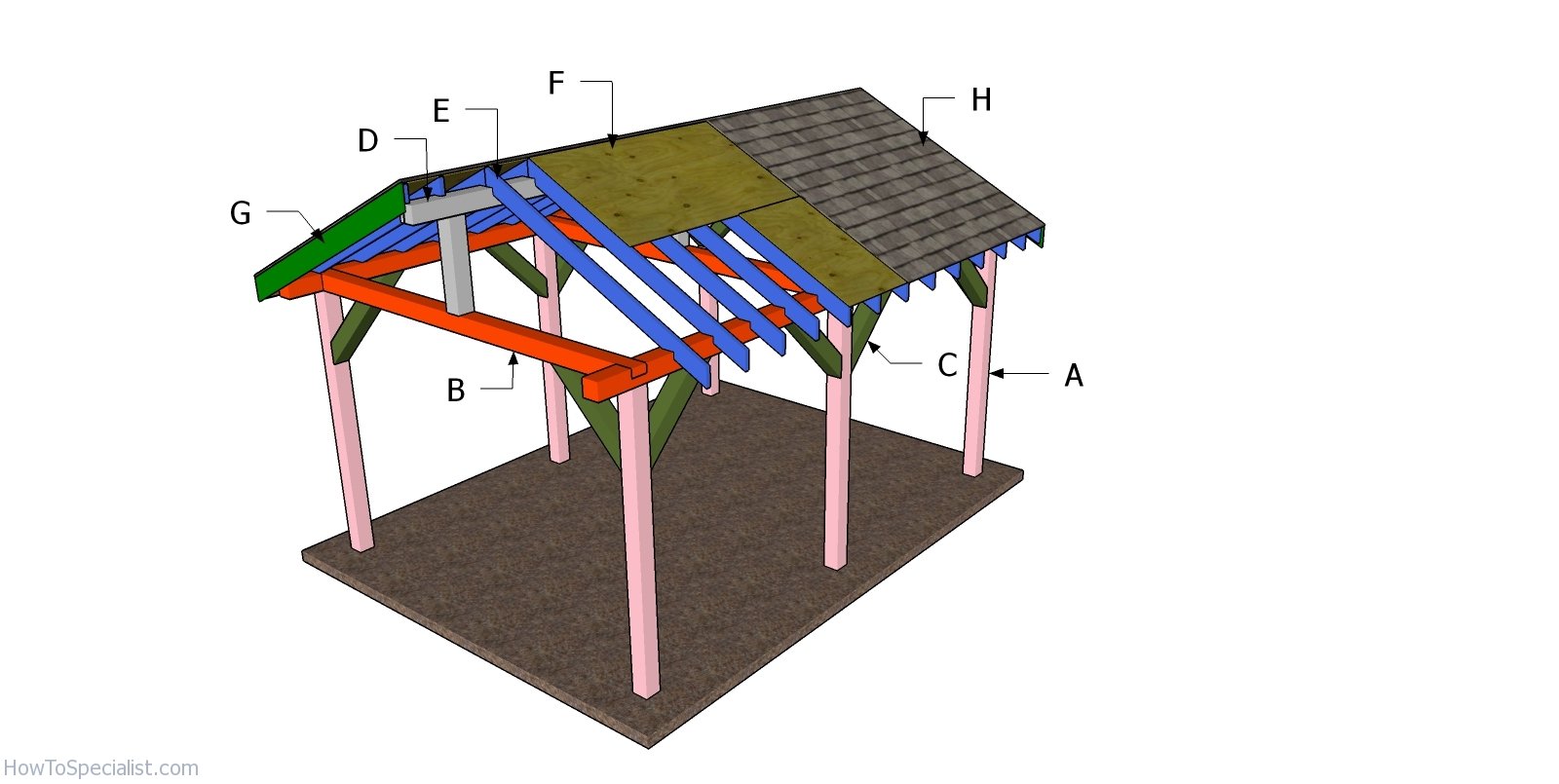
Building a 12×16 pavilion
Cut List
- A – 6 pieces of 6×6 lumber – 96″ long POSTS
- B – 2 pieces of 6×6 lumber – 216″ long, 3 pieces – 144″ long TOP RAILS
- C – 12 pieces of 6×6 lumber – 36″ long BRACES
- D – 3 pieces of 6×6 lumber – 29 1/4″ long, 1 piece – 216″ long RIDGE BEAM
- E – 30 pieces of 2×6 lumber – 96″ long RAFTERS
- F – 2 pieces of 1/2″ plywood – 48″x92 3/4″ long, 2 pieces – 48″x96″ long, 2 pieces – 27 1/4″x48″ long, 2 pieces – 45 1/4″x44 3/4″ long, 2 pieces – 45 3/4″x96″ long, 2 pieces – 75 1/4″ long ROOF
- G – 4 pieces of 1×8 lumber – 97 3/4″ long, 4 pieces – 108″ long TRIMS
- H – 300 sq ft of tar paper, 300 sq ft of asphalt shingles ROOFING
Materials List
- 7 pieces of 6×6 lumber – 8 ft (posts and ridge beam supports)
- 6 pieces of 6×6 lumber – 12 ft (braces and crossbeams
- 3 pieces of 6×6 lumber – 18 ft
- 8 pieces of 1×8 lumber – 10 ft
- 10 pieces of 1/2″ plywood – 4’x8′
- 30 pieces of 2×6 lumber – 8 ft
- 300 sq ft of tar paper, 300 sq ft of asphalt shingles
- 60 pieces of rafter ties
- concrete form tube
- 6 post anchors
- 24 pieces of 8″ screws
- 20 pieces of 5″ screws
- 100 pieces of 3 1/2″ screws
- 2 pieces of T strong tie
- 4 pieces of L strong tie
- 6 pieces of post to beam connector
- Screws for Strong ties
- wood glue, stain/paint
Tools
- Safety gloves, glasses
- Miter saw, jigsaw
- Chalk line, tape measure, spirit level, carpentry pencil
- Drill machinery and drill bits
Tips
- Add trims to the pavilion
- Secure the roofing slats to the structure with galvanized screws
Time
- One Week
How to build a 12×16 pavilion – laying out
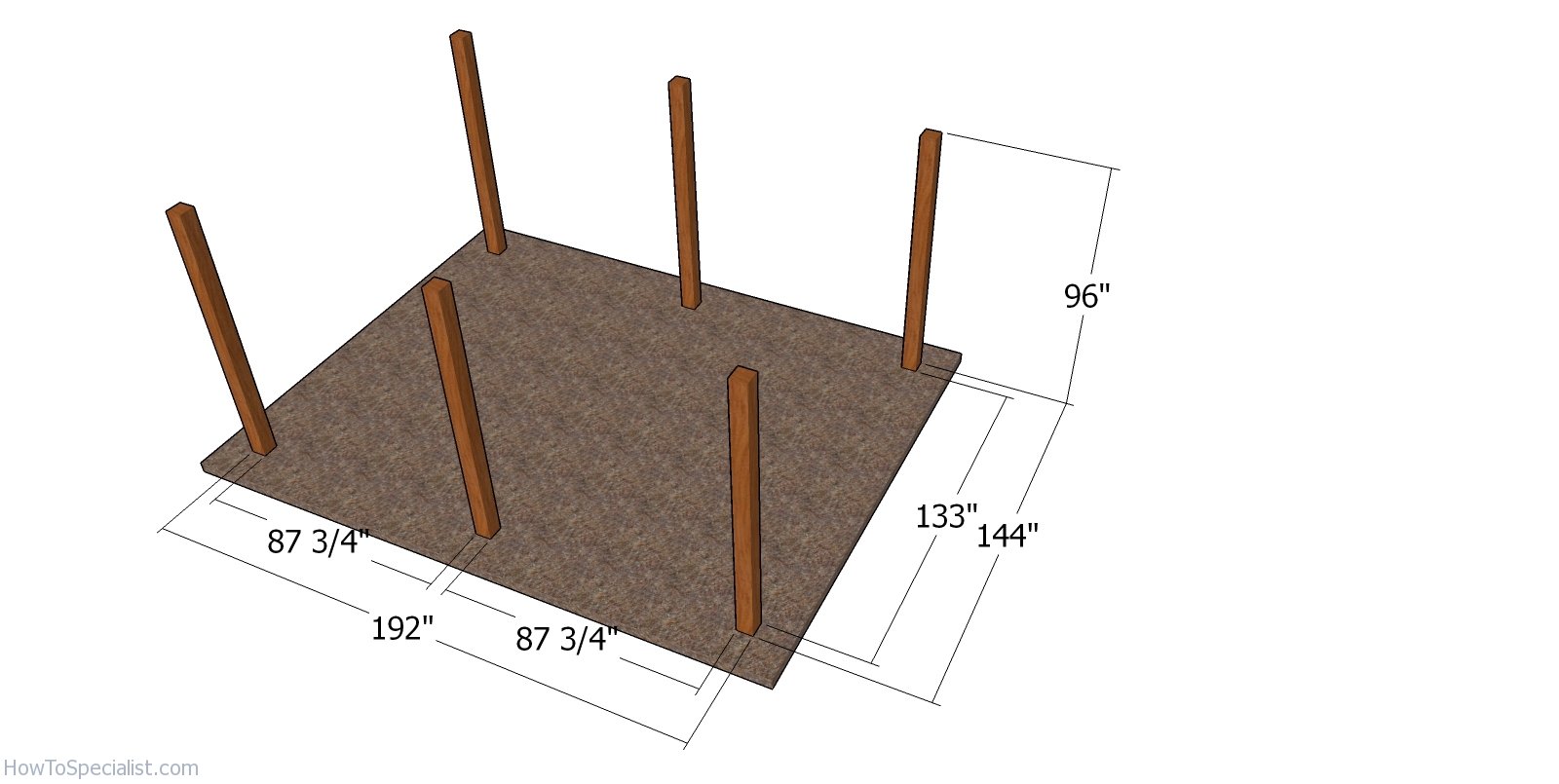
Fitting the posts – outdoor pavilion
The first step of the project is to layout the rectangular pavilion. Therefore, select the location for the pavilion and level the surface with attention. Make sure you remove the vegetation layer and even out the surface. Use batter boards and string to layout the location of the legs. Apply the 3-4-5 rule to each corners, so you make sure they are square. Measure the diagonals and make adjustments so they are equal.
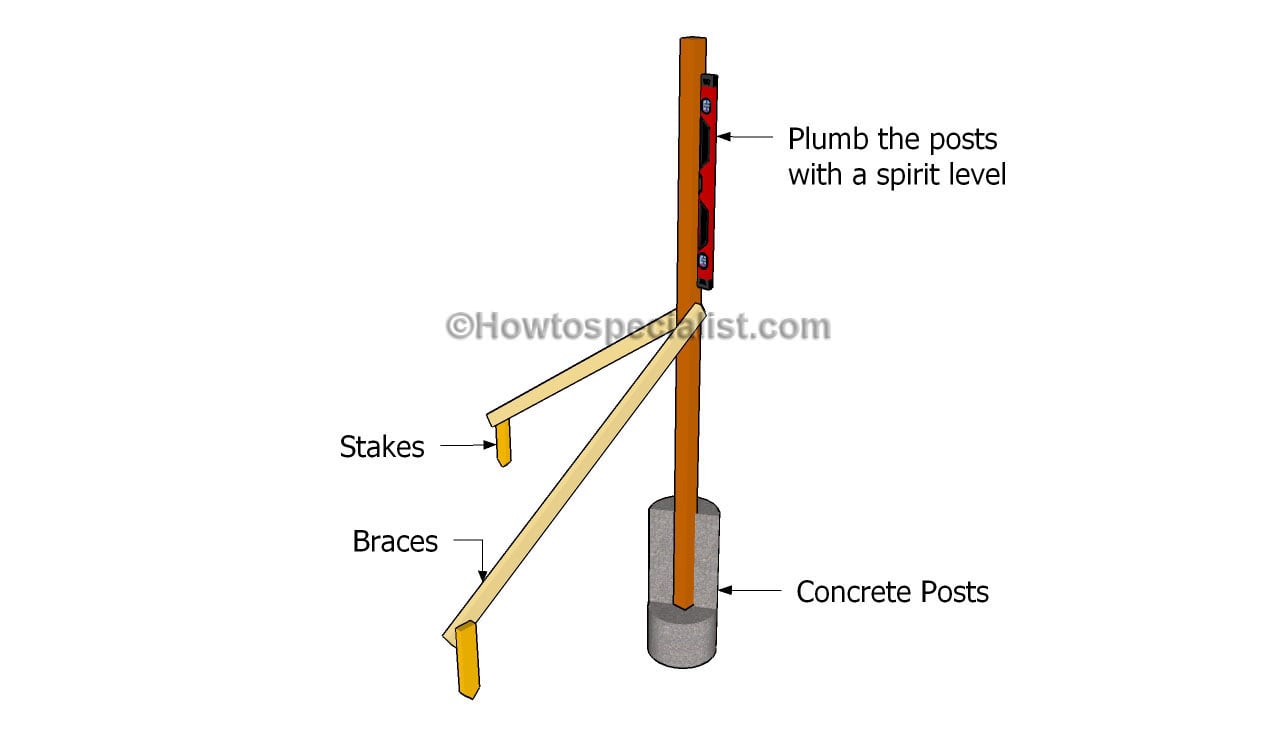
Fitting the posts
After marking the location of the posts, you need to dig 2-3′ deep holes in the ground, using a post hole digger. Install tube forms and fit the posts into place, making sure they are perfectly plumb. Secure the 6×6 posts with braces before filling the forms with concrete.
Building the frame of the pavilion
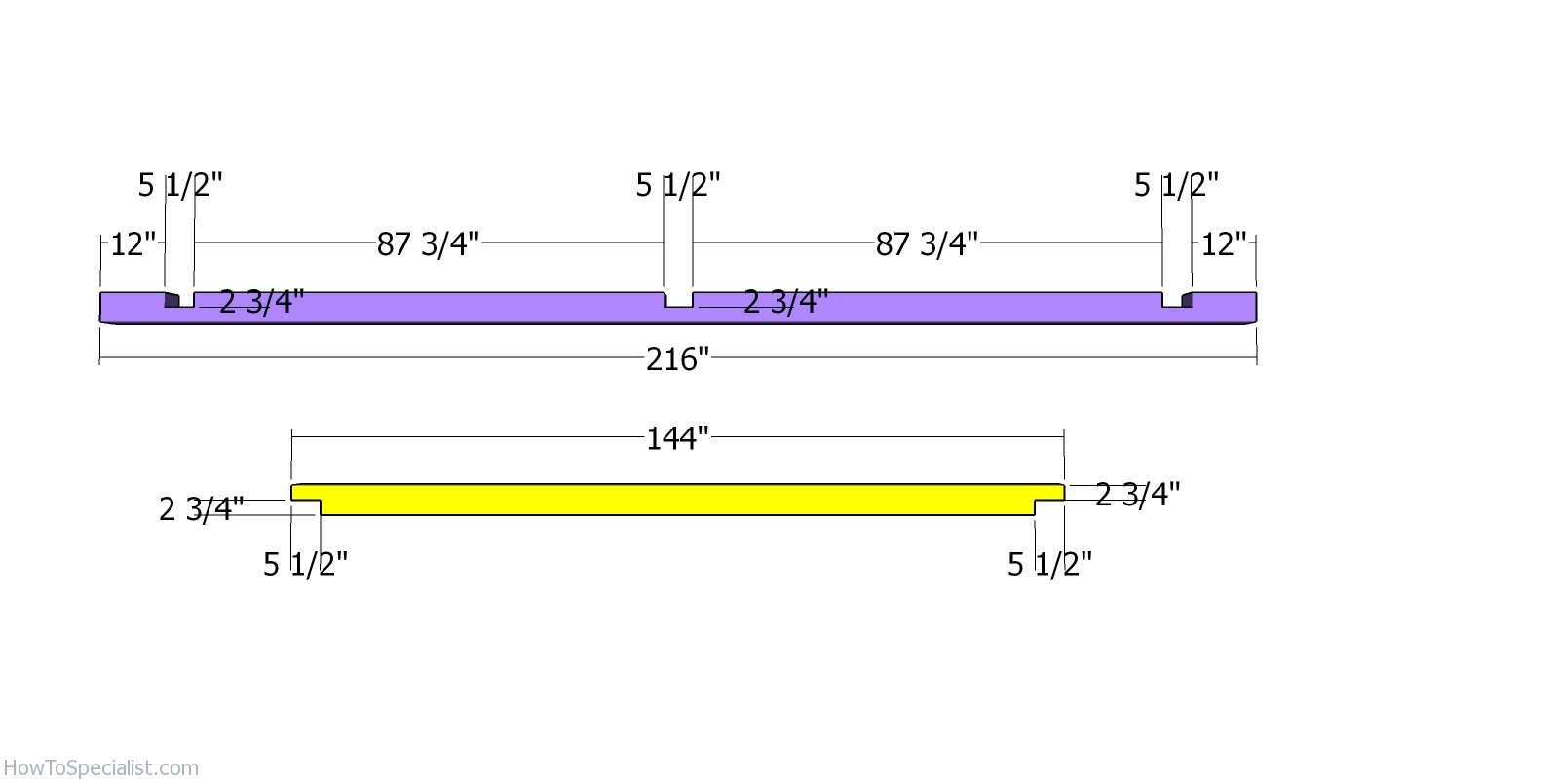
Cutting the top plates – 12×16 pavilion
Use 6×6 lumber for the top plates. As you can easily see in the diagram, you need to make notches to both ends of the beams, using a circular saw. Make the middle notch to the side plates using a saw and a chisel. Make parallel cuts and then remove the excess with a hammer and a chisel. Smooth the recesses with sandpaper.
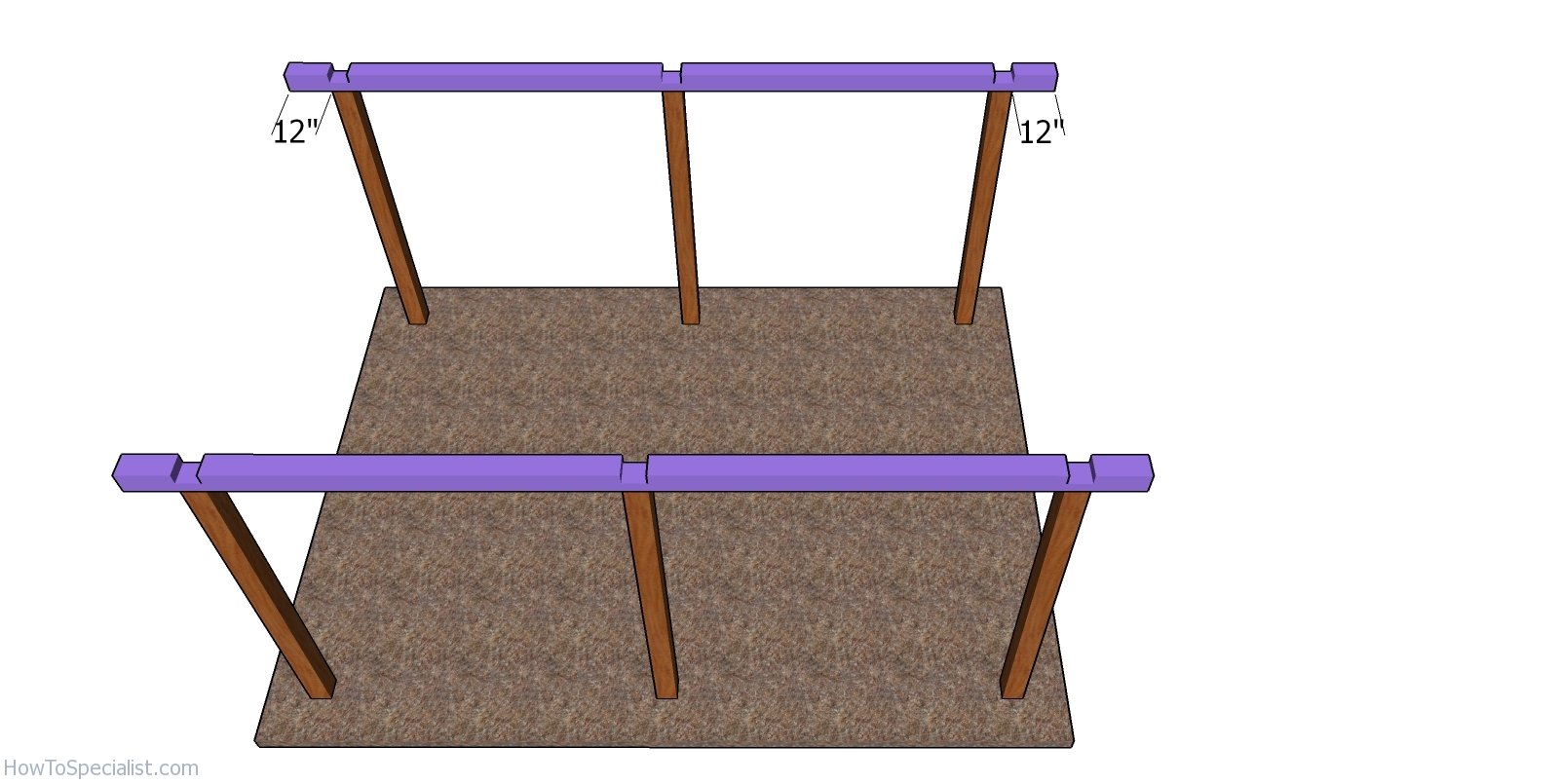
Fitting the top side plates – 12×16 backyard pavilion
Fit the plates to the sides of the pavilion. Center the plates to the posts, making sure you have 12″ overhangs on both sides. Drill pilot holes and insert 8″ screws to lock them into place. Plumb the posts with a spirit level and check if the top plate is perfectly horizontal. Make sure the corners are square.

Fitting the top plates
Fit the rest of the plates to the top of the pavilion. Drill pilot holes and insert 8″ screws, to assemble everything together tightly.
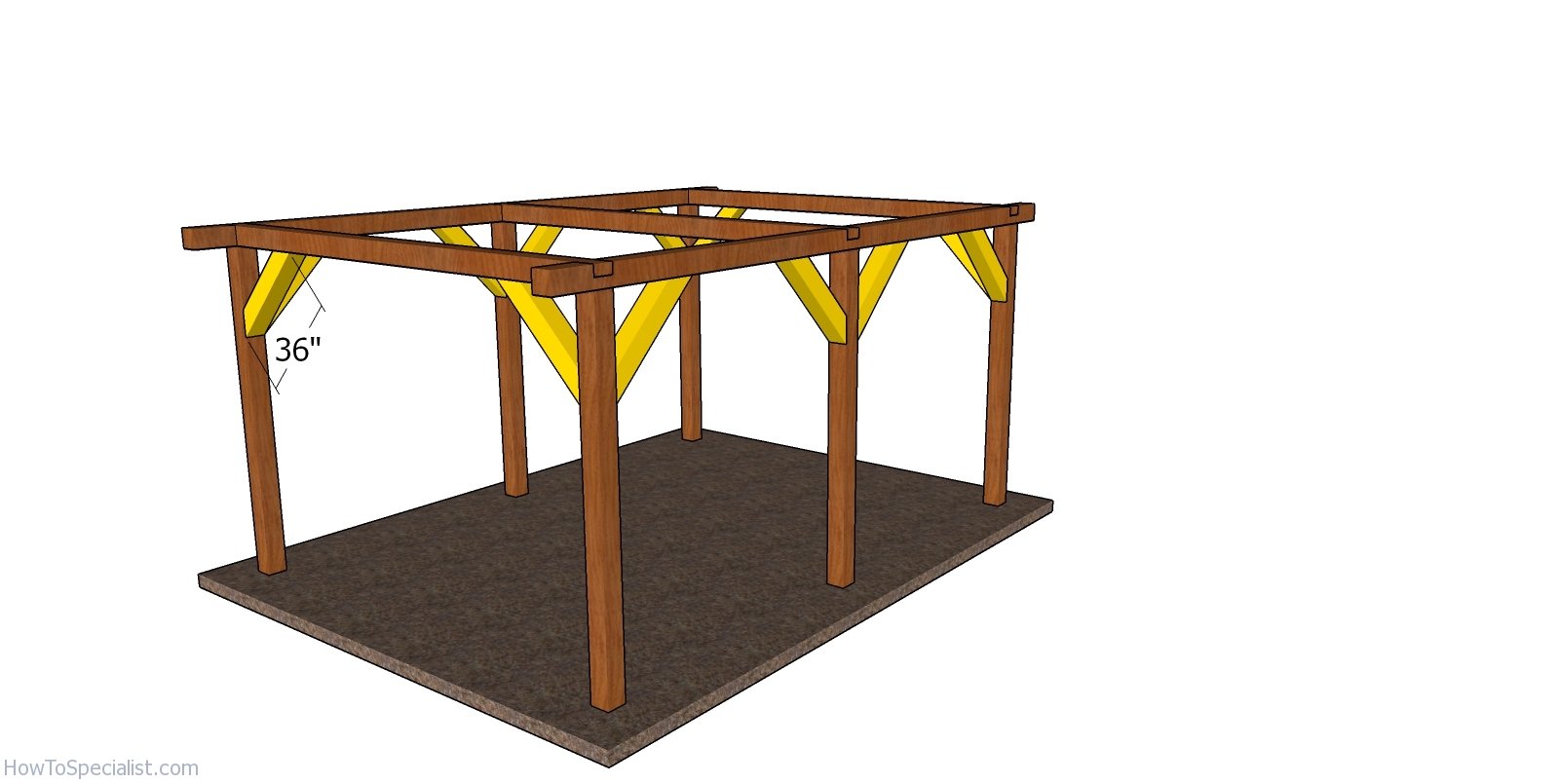
Fitting the braces to the pavilion
Build corner braces for the pavilion from 6×6 lumber. Make 45 degree cuts to both ends of the braces and then lock them into place tightly with 4 1/2″ screws. Plumb the posts and check if the plates are perfectly horizontal.
Building the gable roof for the pavilion
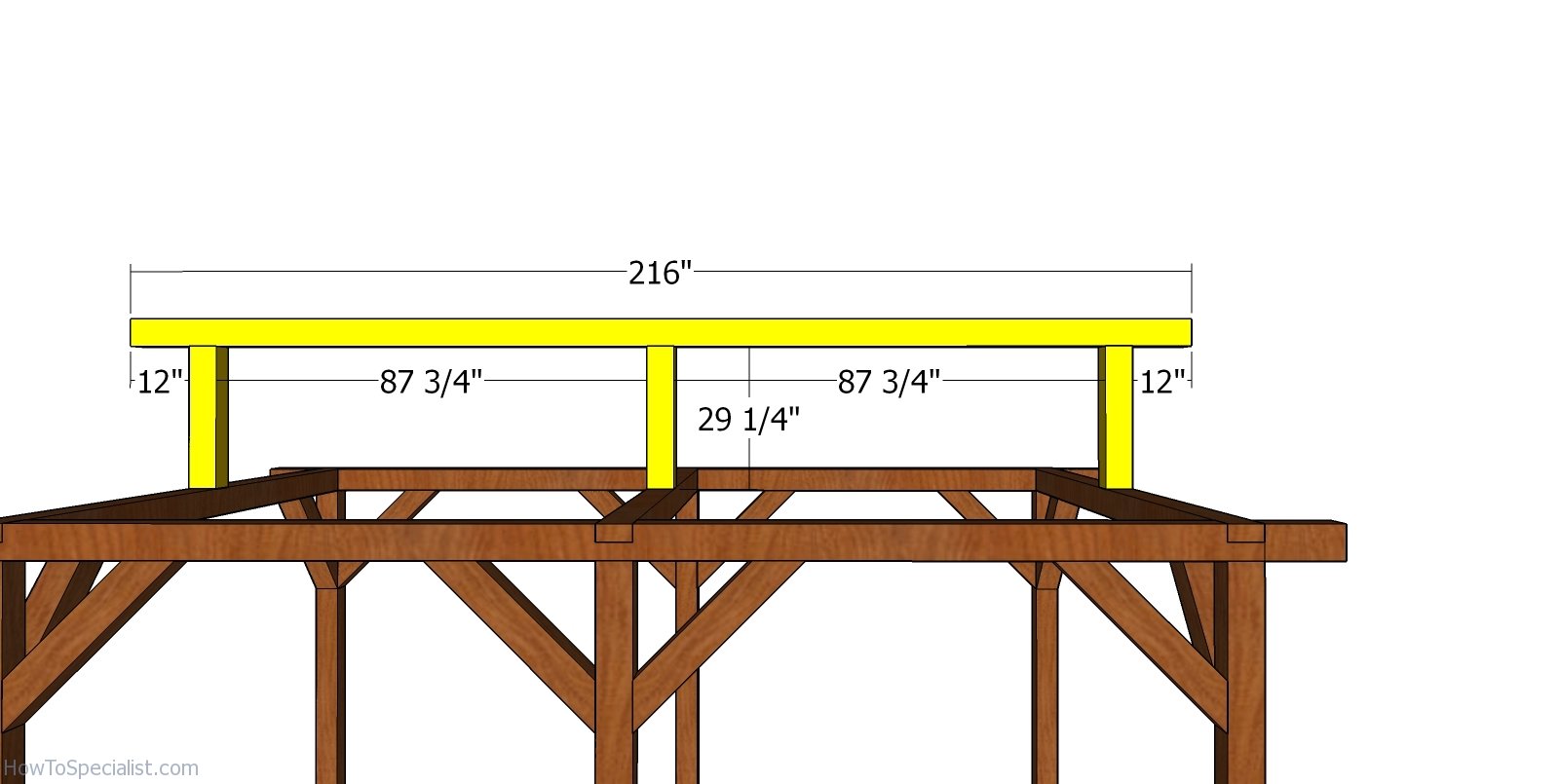
Fitting the ridge beam
Use 6×6 lumber for the ridge beam and for the supports. Center the supports to the top of the plates and lock them into place with post to beam connectors. Fit the ridge beam to the top of the posts with post to beam connectors.
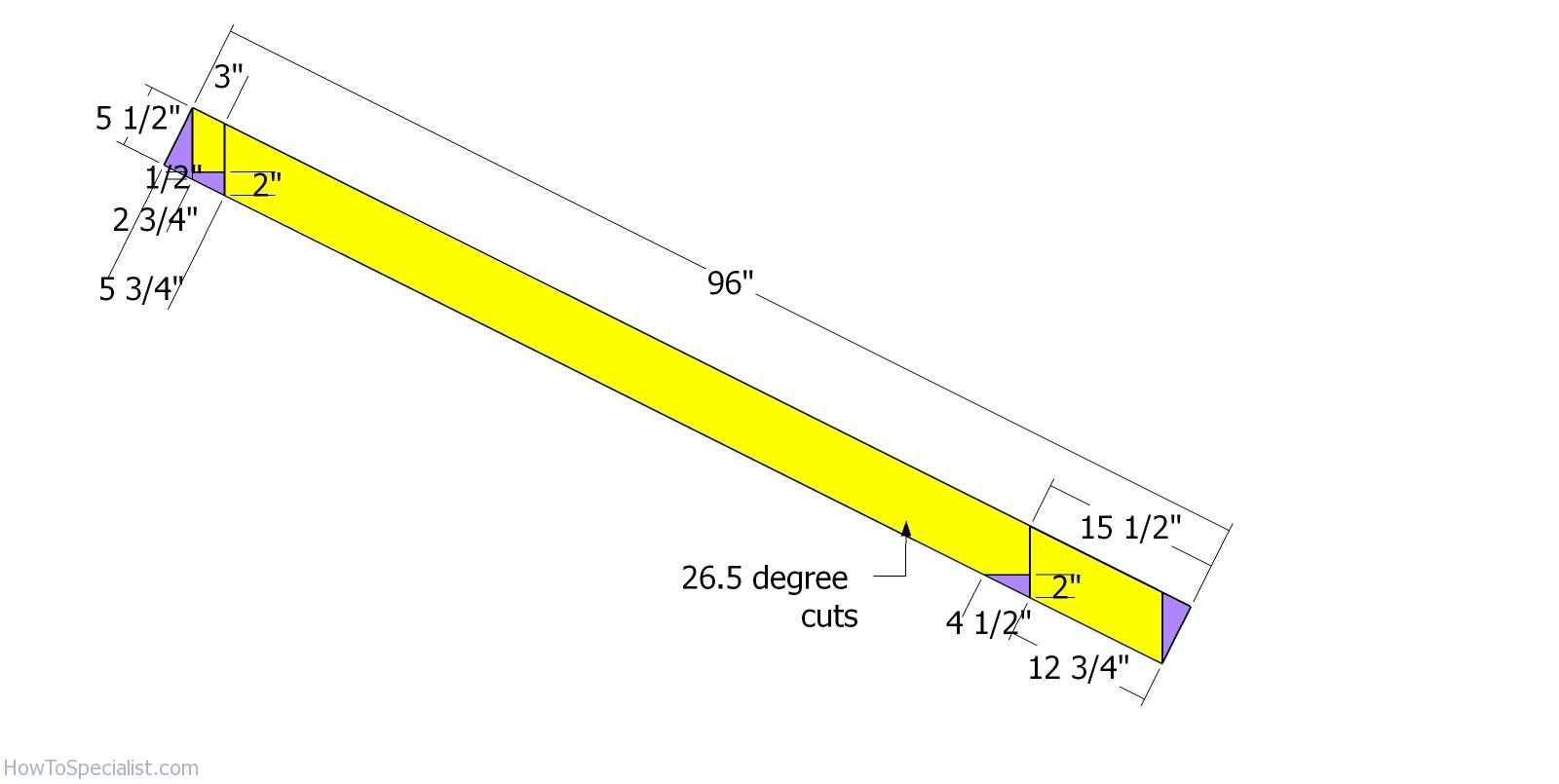
Rafters – 12×16 pavilion
Use 2×6 lumber for the rafters. Make 26.5 degree cuts to both ends of the rafters and then make the birdsmouth cuts, as shown in the diagram.
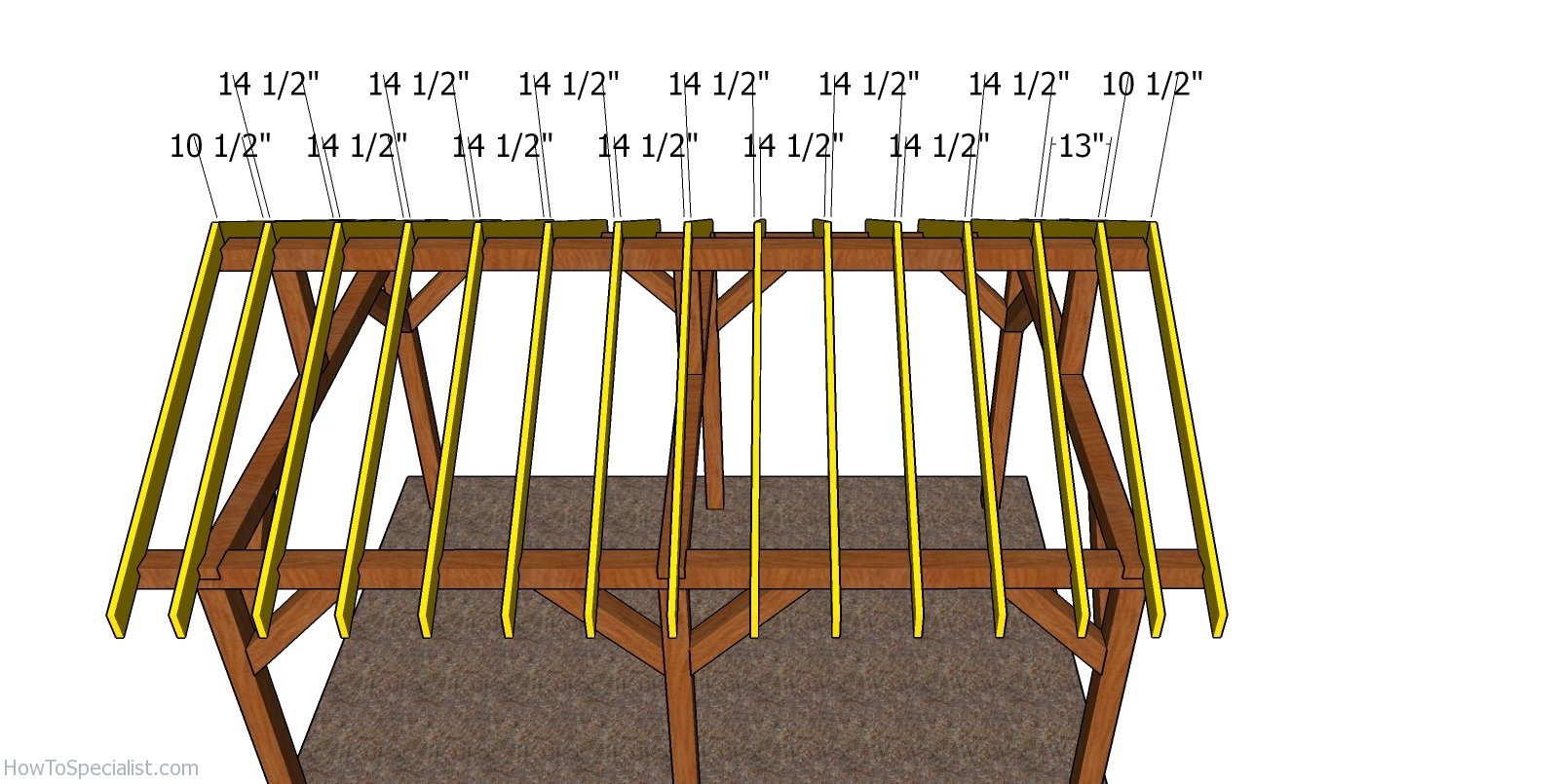
Fitting the rafters
Fit the rafters to the top of the pavilion. Use the info from the diagram to space the rafters every 16″ on center. Use rafter ties and 1 1/2″ structural screws / nails to lock the rafters to the support beams and to the ridge beam.
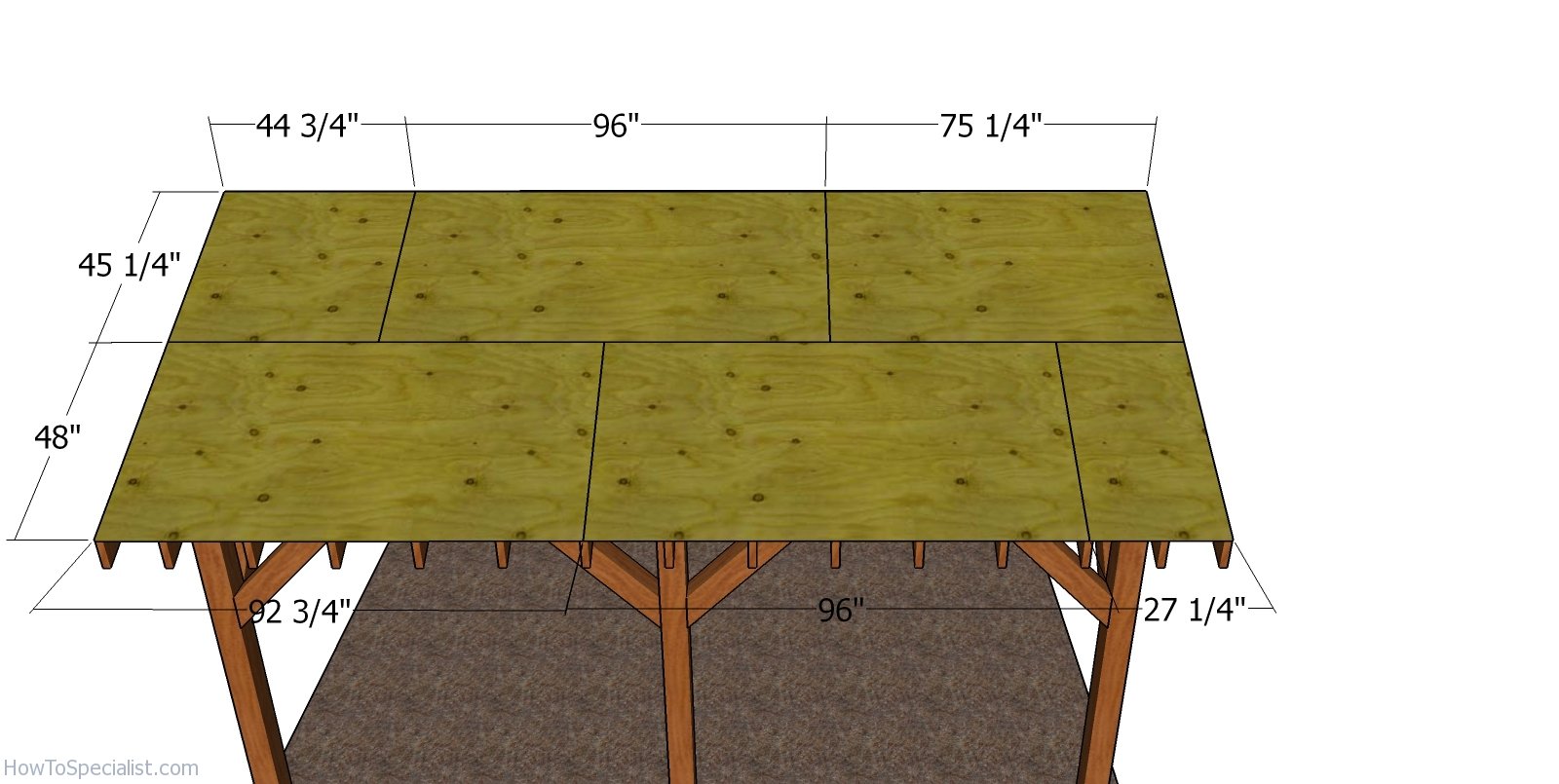
12×16 Pavilion – roof sheets
Use 1/2″ plywood for the roof sheets. Make cuts to the sheets and lay them on top of the roof structure. Leave no gaps between the sheets and align everything with attention. Drill pilot holes and insert 1 5/8″ screws, every 8″ along the framing.
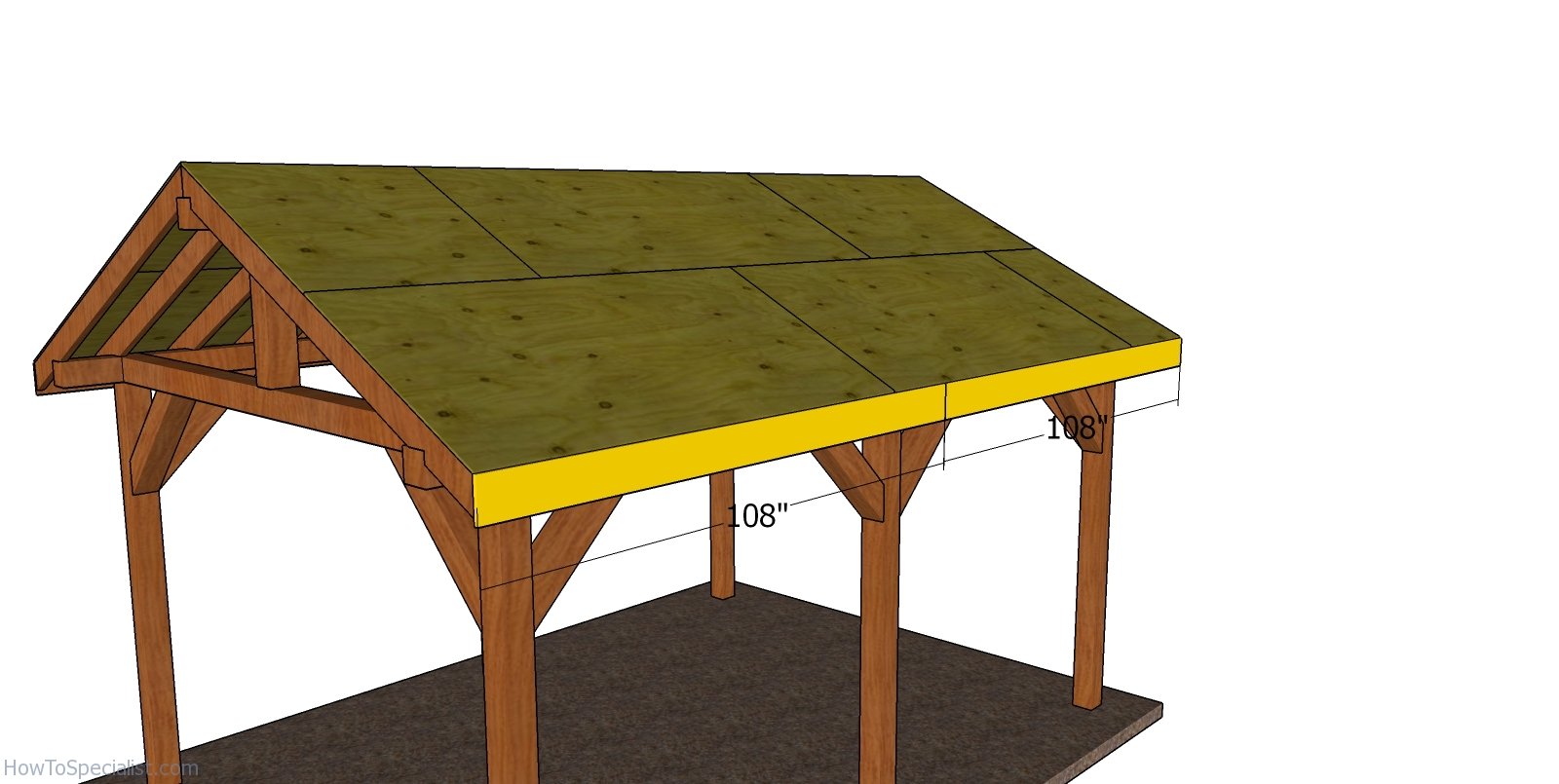
Side roof trims
Use 1×8 lumber for the side roof trims. Align the edges flush and insert 2″ nails to lock them to the end of the rafters.
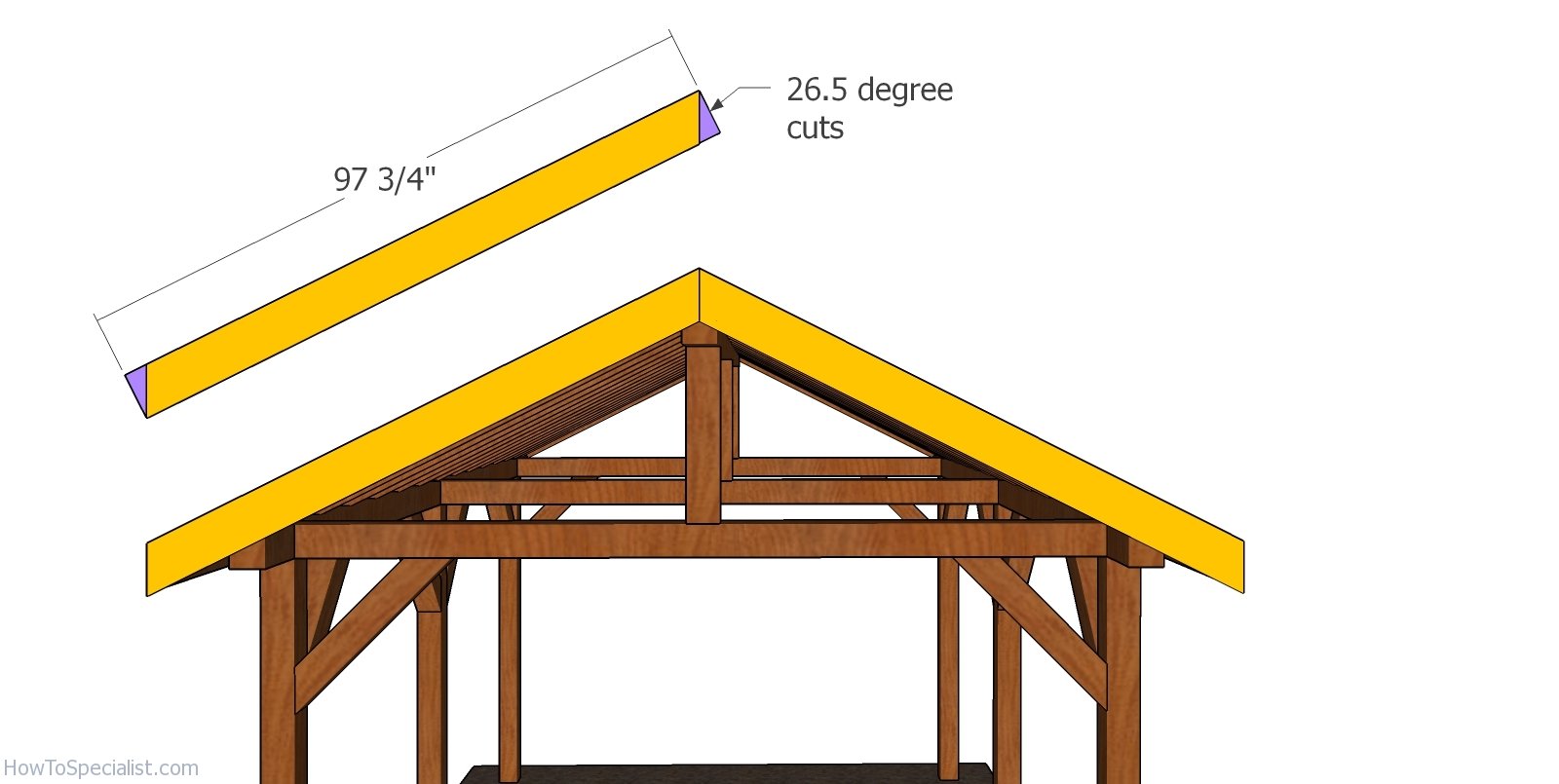
Front and back roof trims
Use 1×8 lumber for the front and back roof trims. Make 26.5 degree cuts to both ends of the trims. Attach the trims to the rafters and insert 2″ nails to lock them into place tightly.
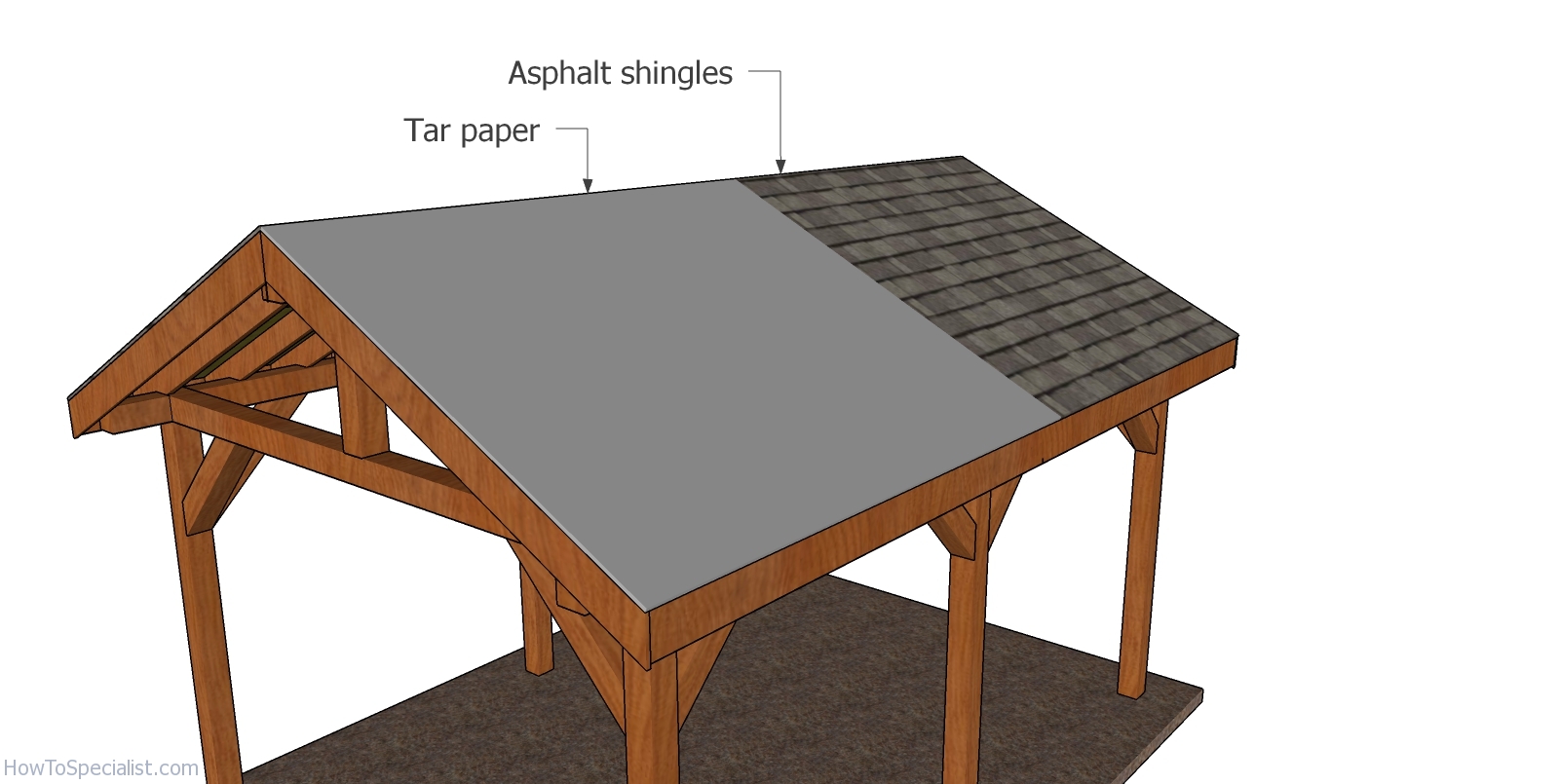
Fitting the roofing
You could fit asphalt shingles to protect the pavilion, as it is a straight forward solution. Therefore, install roofing felt over the roofing sheets, making sure the strips overlap at least 2″. Secure the tar paper to the plywood sheets with roofing staples. Fit the side drip edges over the roofing felt, while the bottom drip edges should be fit under. Place a starting course at the bottom of the roof, before installing the asphalt shingles. Always read the manufacturing instructions before starting the installation, as there are several aspects that differ.
The first course should star with a 3 tab shingle, the second course with a 2 1/2 tab , the third course with a 2 tab, the forth course with a 1 1/2 tab, the fifth course with a 1 tab, the sixth course with a 1/2 tab. Repeat the process from the beginning, starting with the seventh course. Don’t forget that the shingles should overhang from the drip edge about a 1/4″. In addition, secure the asphalt shingles to the roof decking with tacks.
Finishing touches
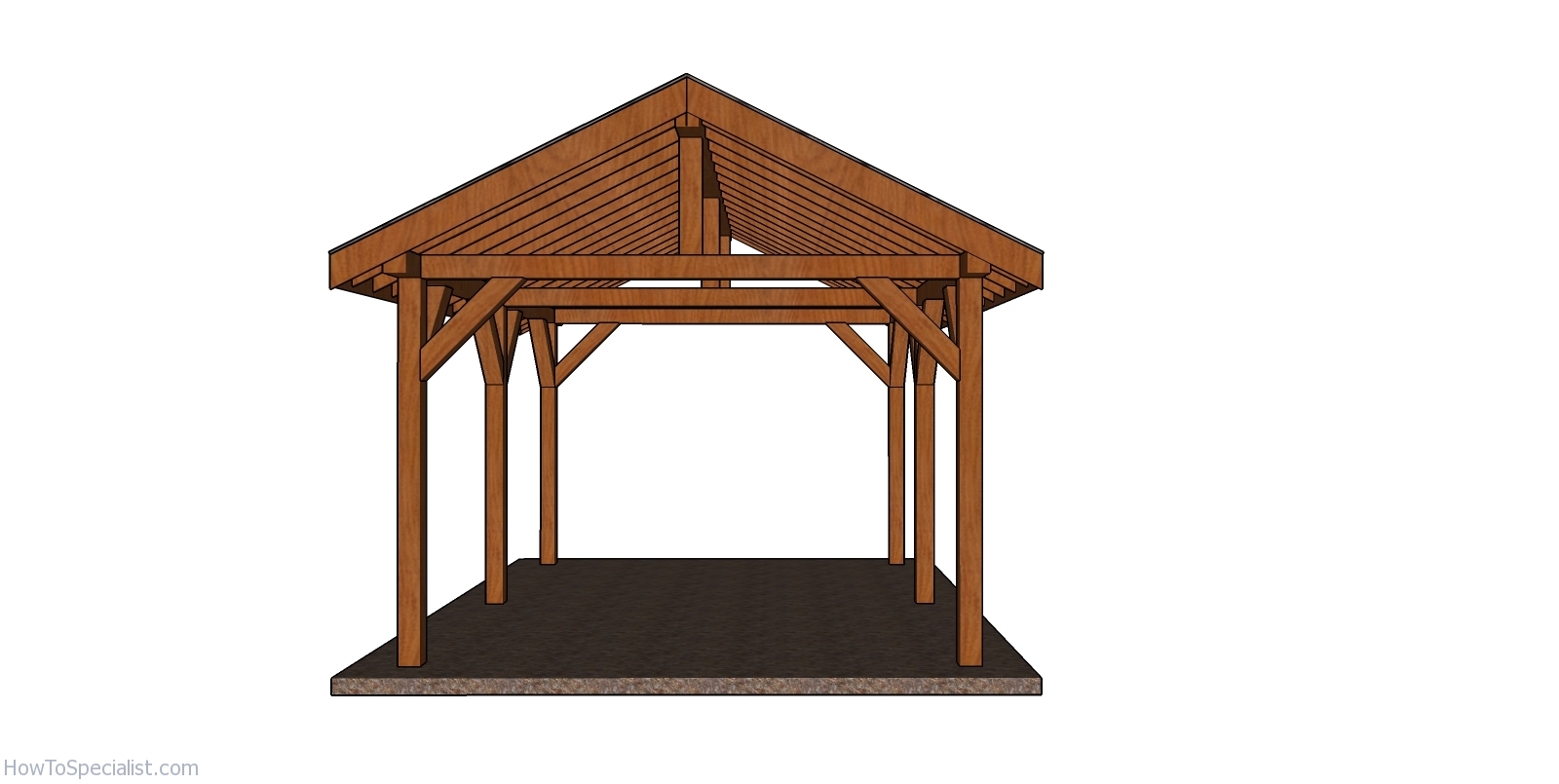
12×16 Pavilion Plans – front view
This pavilion is built on a sturdy 6×6 structure and it features a roof with a 6:12 pitch. You can adjust the slope of the roof to suit your needs.
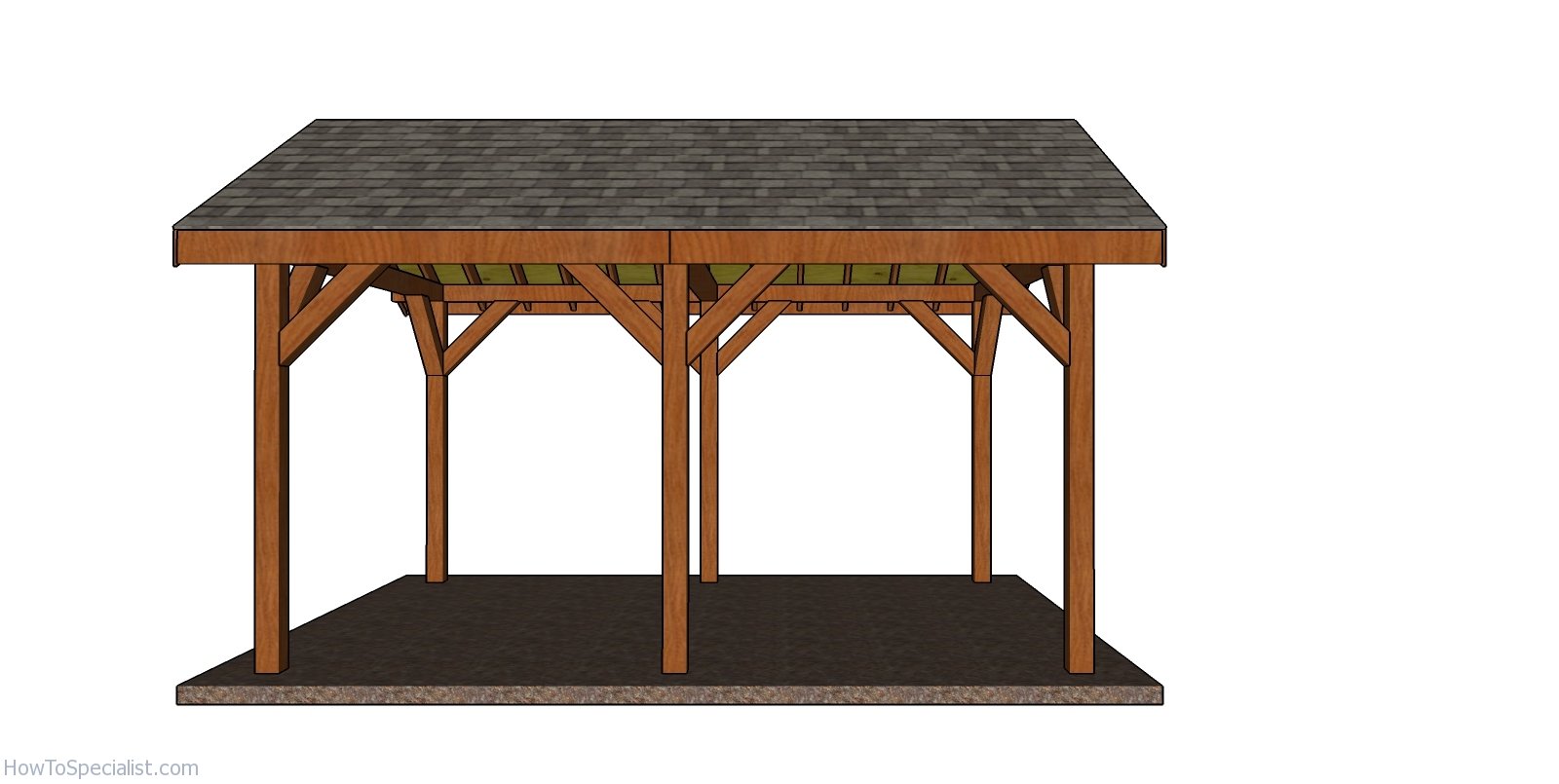
12×16 Pavilion Plans – side view

12×16 Pavilion Plans
Last but not least, you need to take care of the finishing touches. Therefore, fill the holes with wood putty and then smooth the surface with sandpaper. Apply a few coats of paint or stain over the components to enhance the look of the shed and to protect the components from decay.
Thank you for reading my project about 12×16 rectangular pavilion plans and we recommend you to check out the rest of the projects. Don’t forget to LIKE and SHARE our projects with your friends, by using the social media widgets. SUBSCRIBE to be the first that gets our latest projects.


8 comments
Do you have plans for a 16′ x 16′ square porch cover?
Not yet.
Can you shrink down the 12×16 pavilion to 10 x16
Where and how do you faster down the rafters?
In the process of finishing this build up. All I have left is the roof. I’ll finish as soon as the weather clears. I’m about 32 hours in to the build time so far. Made a few changes to the plans as needed, but overall, it’s looking great! Thanks for the plans.
Love the design. Considering building this over a patio and attaching to the back of my house. Would you recommend using treated lumber where the roof attaches to my outside wall or would non-treated be sufficient since it will be under roof?
Pressure treated is the better option.
Do your plans have an engineer’s stamp on them? It’s required here to get a building permit.